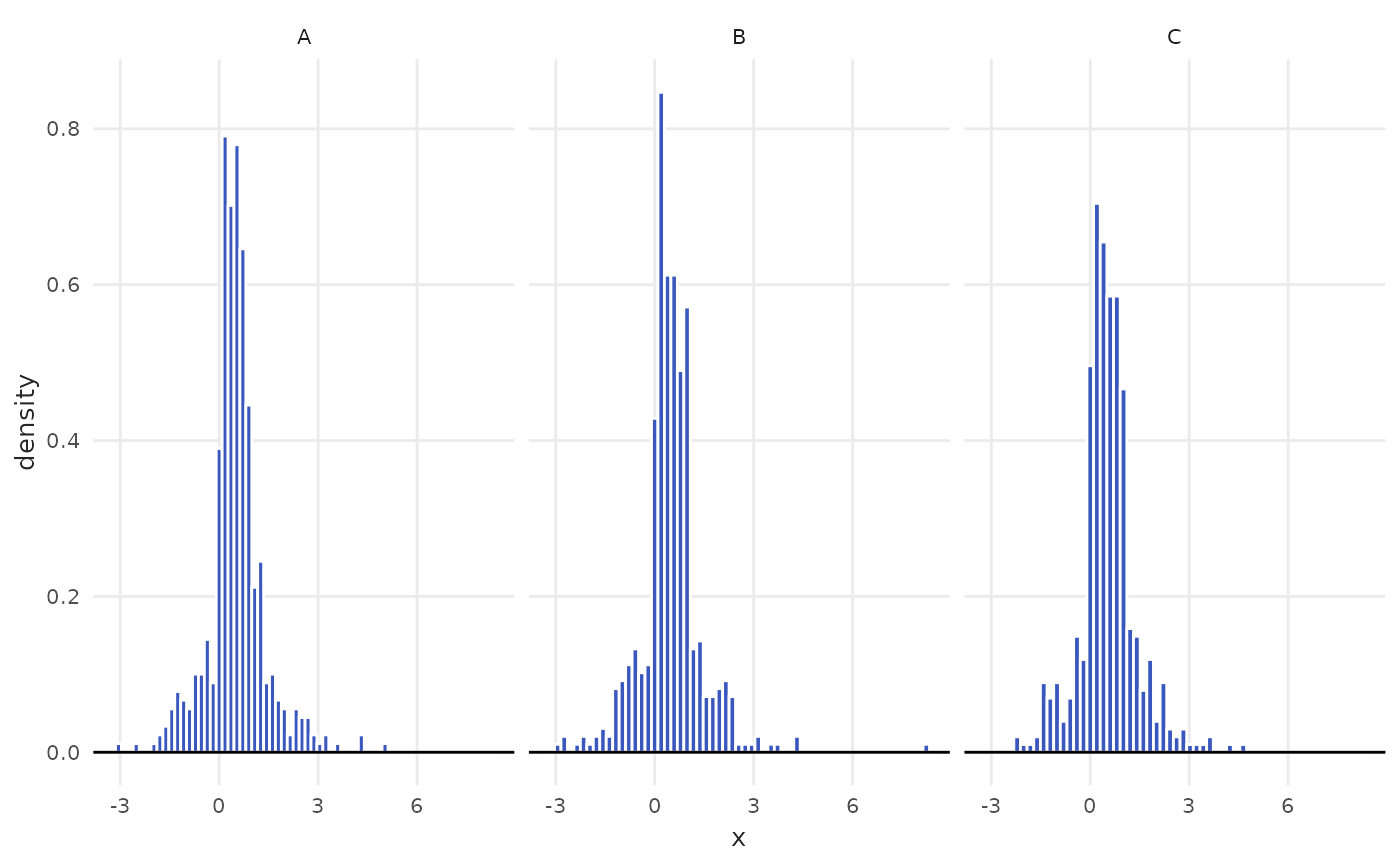Plot a histogram chart
Usage
plot_histogram(
data,
x,
color = "#FFFFFF",
fill = "#3957BD",
zero = TRUE,
bins = NULL,
method = "fd",
density = FALSE,
facet = FALSE,
...
)Arguments
- data
A data.frame type object
- x
<
data-masked> Indicates the numeric variable to be mapped- color
Color of the line of column.
- fill
Color of the inner part of the column.
- zero
Logical indicating if a horizontal (y = 0) line should be drawn on the plot.
- bins
Number of bins.
- method
Character indicating an algorithm to compute optimal number of bins. See details. Overridden by bins. Defaults to
method = "fd".- density
Logical indicating if density should be plotted on y-axis.
- facet
<
data-masked> Optional variable to facet the graphics.- ...
Additional parameters to
facet_wrap()
Examples
set.seed(5)
tbl <- data.frame(x = rnorm(n = 1000))
# Default parameters use Freedman-Diaconis
plot_histogram(data = tbl, x = x)
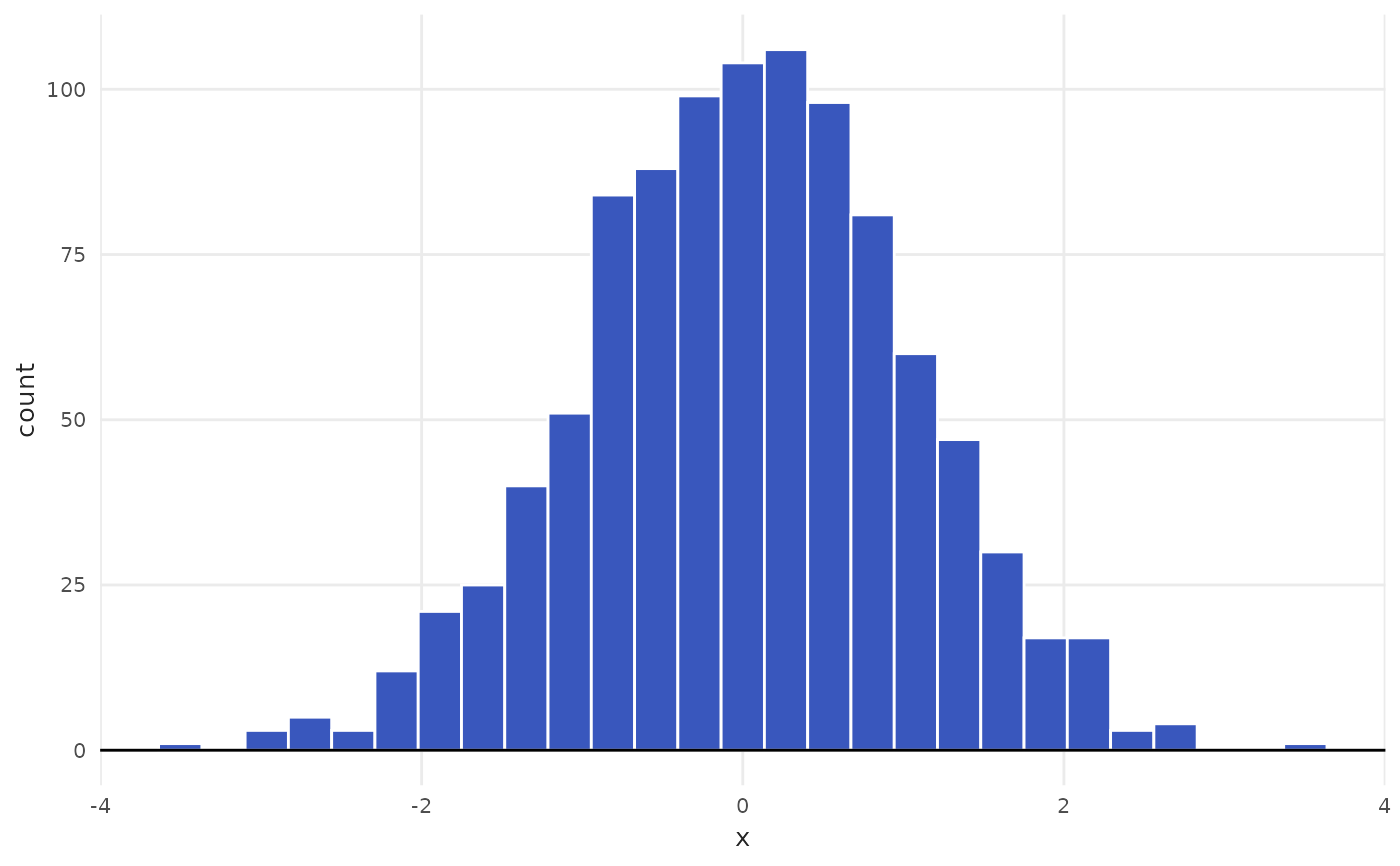 # Use bins to manually choose number of bins
plot_histogram(data = tbl, x = x, bins = 50)
# Use bins to manually choose number of bins
plot_histogram(data = tbl, x = x, bins = 50)
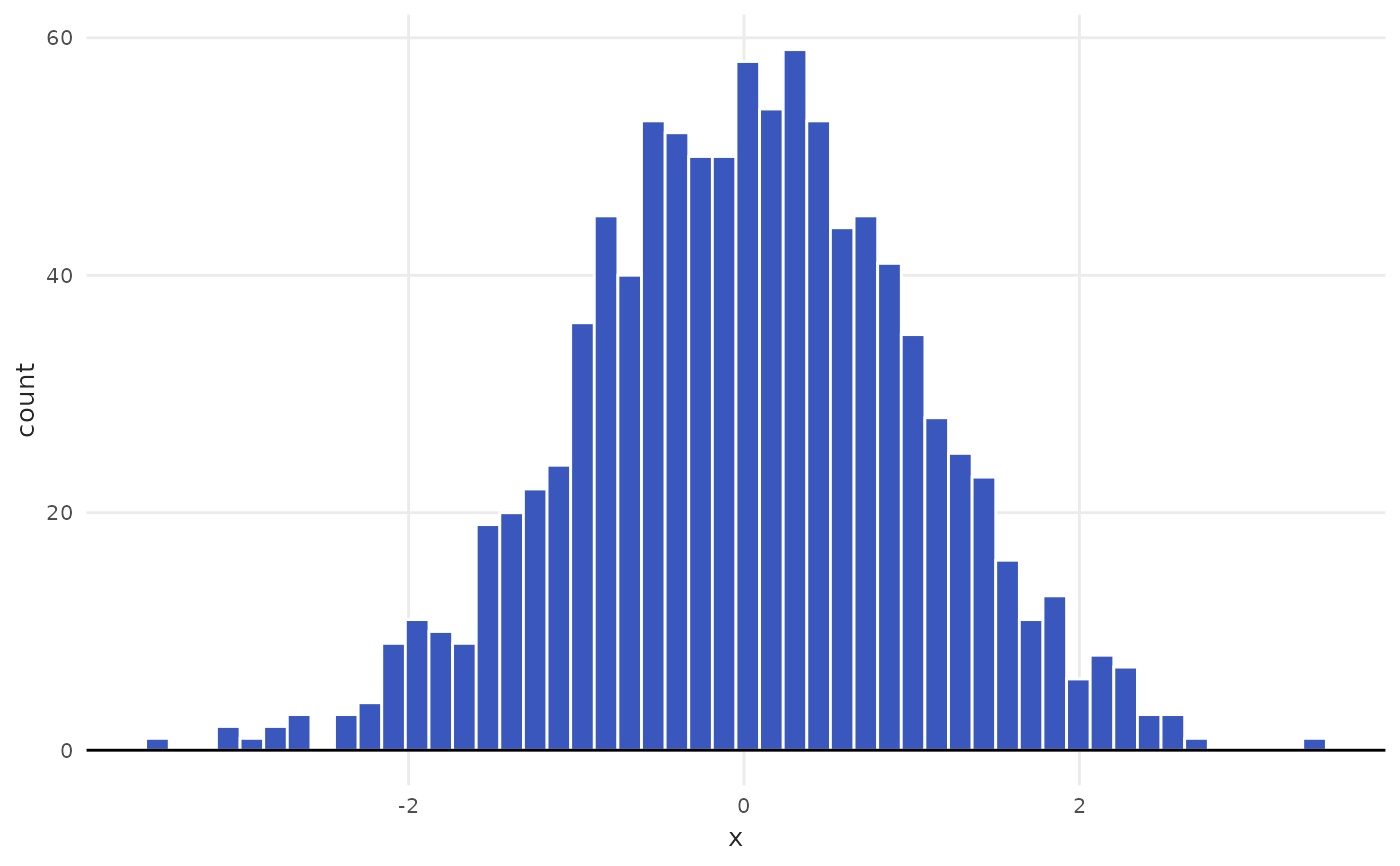 # Example of alternative methods: square root and Rice
plot_histogram(data = tbl, x = x, method = "sqrt")
# Example of alternative methods: square root and Rice
plot_histogram(data = tbl, x = x, method = "sqrt")
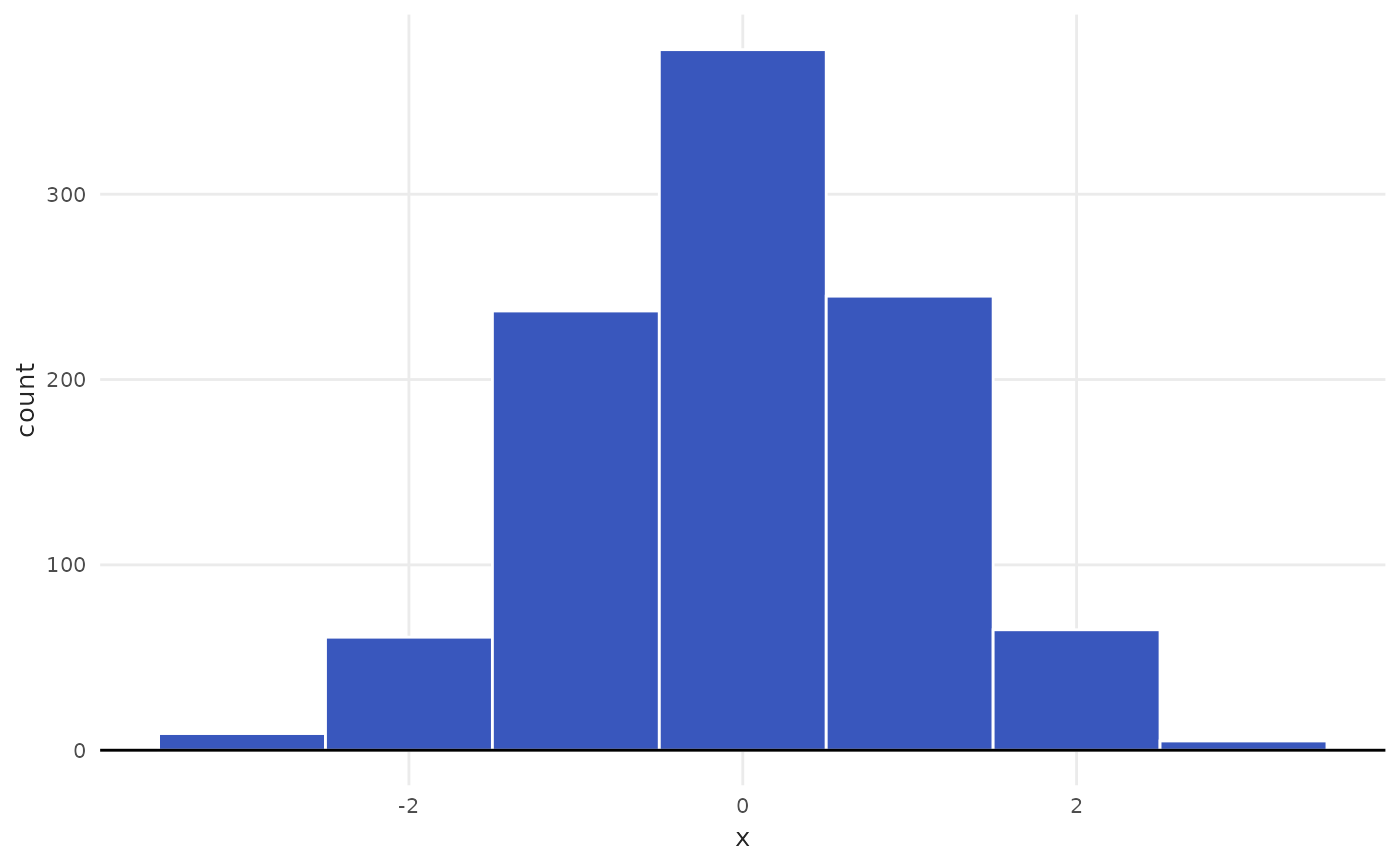 plot_histogram(data = tbl, x = x, method = "Rice")
plot_histogram(data = tbl, x = x, method = "Rice")
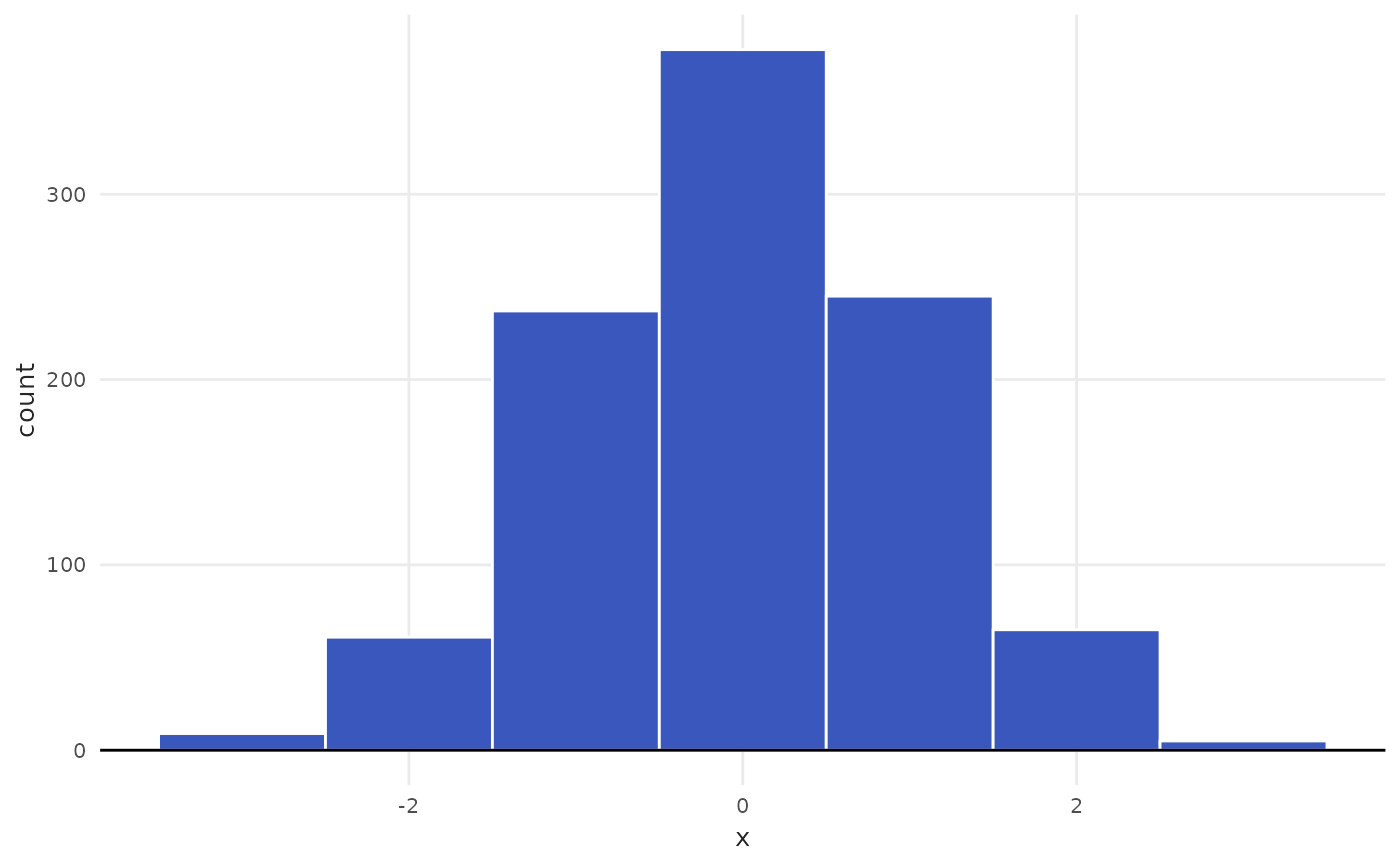 # To compare multiple groups use facet
tbl <- data.frame(
city = rep(c("A", "B", "C"), each.out = 500),
x = c(rnorm(500), runif(500), rexp(500))
)
plot_histogram(data = tbl, x = x, facet = city, density = TRUE)
# To compare multiple groups use facet
tbl <- data.frame(
city = rep(c("A", "B", "C"), each.out = 500),
x = c(rnorm(500), runif(500), rexp(500))
)
plot_histogram(data = tbl, x = x, facet = city, density = TRUE)
